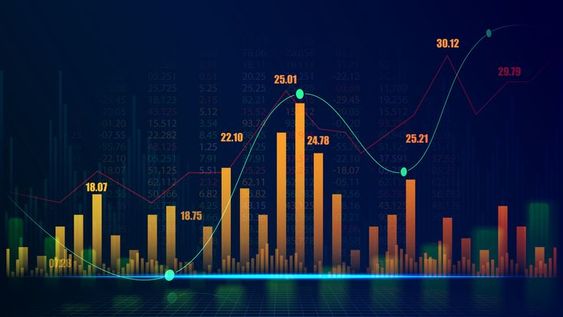To prepare for trading, there are numerous methods for analyzing the FX market. Traders should keep their analysis simple enough to find good trading chances, despite the abundance of categories of study. It is up to each trader to determine which sort of analysis best suits their trading style.
Traders utilise three different types of Forex analysis to analyse patterns and predict the direction of a currency pair. To suit their trading style and attitude, forex traders may combine several types of analysis or specialise on one element, becoming specialists at measuring price activity. Here are the three main type of analysis:-
Fundamental analysis
Fundamental analysis is the study of how currency prices are formed, as well as the fundamental economic and other factors that influence the exchange rate of a foreign currency.
It is the process of analysing economic and political data in order to forecast future currency price fluctuations.
Fundamental analysis aids in the forecasting of future foreign currency prices. Price forecasting is based on a variety of fundamental economic elements and indicators that influence a country’s economic performance. Other elements that may influence the price movement of a currency pair include numerous geopolitical factors.
This Fundamental analysis is not utilised to provide exact figures for various currency exchange rates. Instead, it aids in determining the forex spot market’s trend over a given time period.
If fundamental research points to a good outlook for a currency pair, it means that the price of that pair will likely trend upward shortly. A bearish forecast means that the currency pair’s price will fall short. You can Take a fundamental analysis course at Capitalvarsity to learn more about fundamental analysis.
Technical Analysis
Technical analysis helps forecast future market moves by using historical data. There are various types of charts that can be used as technical analysis tools. These graphs show currency price movements over a period of time prior to exchange deals, as well as technical indicators. The technical indicators are derived from the mathematical processing of averaged and other price movement features.
Technical analysis is founded on the idea that by examining historical price movements, one may determine present trading circumstances and prospective price movement. Study the charts and look for several examples of this type of price action if you want to develop your technical analysis skills.
Indicators can also be used by technical traders to confirm price direction. Even if most technical indicators are trailing, they might help you decide when to enter and leave a trade.
Sentimental analysis
Traders and investors come to the market with their own ideas and perspectives. These views and opinions are influenced by the traders and investors positions. This contributes to the market’s general mood, regardless of what information is available.
Every market player, including traders and investors, has an opinion on why the market behaves the way it does and whether to trade in the market’s direction or against it.
Because retail traders make up such a small percentage of the global forex market, no matter how passionate you are about a particular trade, you will be unable to influence the forex markets in your favour.
When you notice considerable momentum on the charts, it signifies that the vast majority of Forex traders are holding a position. In regions of support and opposition, it’s clear to see how people feel. Traders from all over the world have marked these zones and are waiting for price activity. For example, if a large number of traders are optimistic on EUR/USD, they expect the Euro will climb in value, outperforming the US dollar. When the price enters a historical zone, it is possible that the price has reversed numerous times in the past, as evidenced by the charts.
Some trading platforms display the volume of trades, while others do not. You can also utilise a currency strength metre, which shows which currency pairs are weak and which are strong. If prices are rising, you can be sure that money is moving in lockstep with the mood.
What is the best method for Forex analysis?
Trading in the forex market is all about executing a strategy. Forex trading techniques assist you in gaining an understanding of market movements and making appropriate choices. Each method is equally important, and neither may be emphasised more than the other. Many traders and investors prefer to analyse long-term investments or gain short-term profit using a single analysis method. The best approach is to combine fundamental, technical, and emotive analyses. To provide us with enough data on the Forex market, each analysis technique requires the assistance of another.

